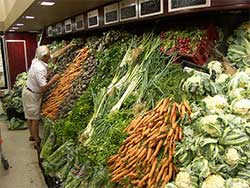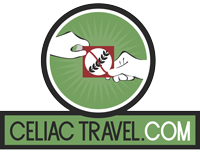A Simple Guide To Gluten Free Eating For Celiacs / Coeliacs
What does a gluten free diet consist of?
This is the million dollar question. There are so many gluten free food lists out there and advice on what brand of this you can eat and what brand of the other that you can’t eat. So to make it simple, here is my interpretation of a safe diet.
Tip! Print this page out and give it to your friends and family.

Food a Celiac can eat:
- Rice, maize, potatoes, all kinds of vegetables and fruit, eggs, cheese, milk, meat and fish, nuts, seeds, pulses and beans as long as they are not cooked with wheat flour, batter, breadcrumbs or sauces.
- Wine
- Any food specifically labelled as gluten-free. Beware – food labelling standards vary around the globe so it is not always safe to rely on ingredient labels in a new country.
To help you get safe food when eating out, or on vacation, get gluten free restaurant cards in many languages…
Food that may make a Celiac ill (it’s best to check!)
- Any food that contains flours or grains of wheat, rye, barley and oats, including spelt flour.
- Marinades, sauces, mayonnaise, pickles, gravy mix.
- Pasta and couscous.
- Batter, breadcrumbs, pastry
- Soy sauce and mono-sodium glutamate (MSG)
- Stock or bouillon
- Modified starch
- Malt or malt flavouring (common ingredient in breakfast cereals) and malt vinegar.
- Any ingredient listed as a “natural flavouring”
- Processed meat or seafood.
- There is a large list of forbidden ingredients (e.g. dextrin and malto-dextrin, citric acid), which generally are found in processed and prepared food and are sometimes made using wheat. As a simple rule, processed and prepared foods are not allowed unless specifically marked as gluten free.
- Beer, grain based spirits.
Cross-contamination can be avoided if you are careful in the kitchen. For example, grills must be cleaned before cooking, toasters not used unless scrupulously clean, separate stirring spoons used etc. Toast crumbs in the butter or jam are a common source of contamination.
Although at first, the gluten free diet can seem terribly restrictive, it’s actually not that hard once you get used to it. And the good news is that a celiac that follows a well balanced gluten-free diet can expect to lead a healthy life!
